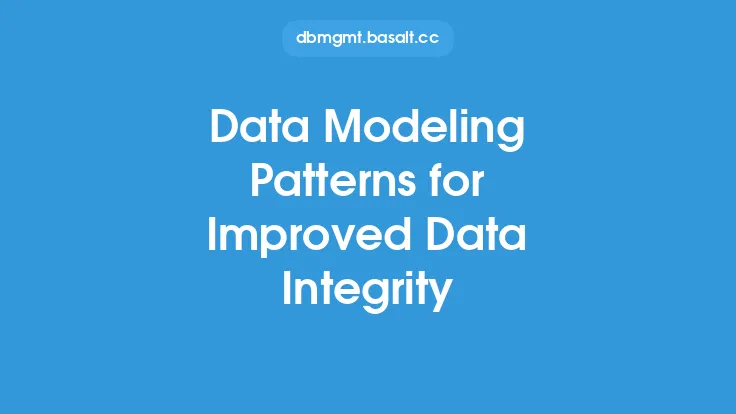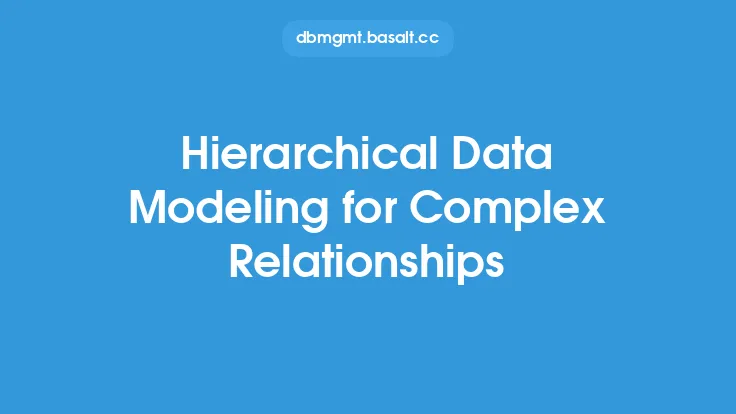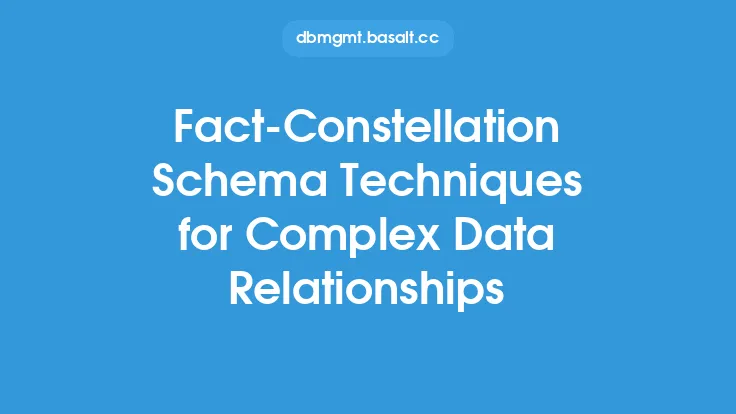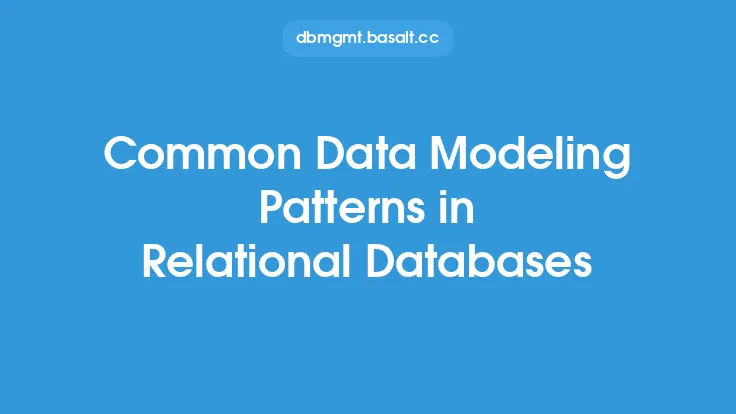When designing a database, one of the most challenging aspects is handling recursive relationships. Recursive relationships occur when a table has a relationship with itself, such as an employee table where an employee can have a manager who is also an employee. In this article, we will explore various data modeling patterns for handling recursive relationships, providing a comprehensive overview of the different approaches and their trade-offs.
Introduction to Recursive Relationships
Recursive relationships can be found in many real-world scenarios, such as organizational hierarchies, product categorization, and social networks. In each of these cases, a single table is related to itself, creating a self-referential relationship. For example, in an organizational hierarchy, an employee can have a manager who is also an employee, and that manager can have another manager, and so on. This creates a recursive relationship where an employee can have multiple levels of managers.
Types of Recursive Relationships
There are several types of recursive relationships, including:
- Self-referential relationships: A table has a foreign key that references its own primary key, such as an employee table where an employee's manager is also an employee.
- Hierarchical relationships: A table has a recursive relationship where each row represents a node in a hierarchy, such as a product categorization table where each product can have sub-products.
- Network relationships: A table has a recursive relationship where each row represents a node in a network, such as a social network table where each user can have friends who are also users.
Data Modeling Patterns for Recursive Relationships
There are several data modeling patterns that can be used to handle recursive relationships, each with its own strengths and weaknesses. Some of the most common patterns include:
- Adjacency List: This pattern involves adding a foreign key to the table that references the primary key of the same table. For example, an employee table can have a foreign key called "manager_id" that references the primary key "employee_id".
- Path Enumeration: This pattern involves storing the entire path of a recursive relationship in a single column. For example, a product categorization table can have a column called "path" that stores the entire hierarchy of categories for each product.
- Nested Sets: This pattern involves storing the recursive relationship as a nested set of intervals. For example, a hierarchical table can have two columns called "left" and "right" that represent the interval of each node in the hierarchy.
- Closure Tables: This pattern involves creating a separate table to store the recursive relationships. For example, an employee table can have a separate table called "employee_closure" that stores the relationships between employees and their managers.
Advantages and Disadvantages of Each Pattern
Each data modeling pattern for recursive relationships has its own advantages and disadvantages. For example:
- Adjacency List: This pattern is simple to implement and easy to understand, but it can be slow for large datasets and can lead to inconsistencies if not properly maintained.
- Path Enumeration: This pattern can be fast for querying, but it can lead to data redundancy and can be difficult to maintain if the recursive relationship changes.
- Nested Sets: This pattern can be fast for querying and can handle large datasets, but it can be complex to implement and can lead to data inconsistencies if not properly maintained.
- Closure Tables: This pattern can be fast for querying and can handle large datasets, but it can lead to data redundancy and can be complex to implement.
Best Practices for Handling Recursive Relationships
When handling recursive relationships, there are several best practices to keep in mind:
- Use indexes: Indexes can improve query performance when working with recursive relationships.
- Use constraints: Constraints can help maintain data consistency and prevent inconsistencies in the recursive relationship.
- Use views: Views can simplify complex queries and provide a layer of abstraction when working with recursive relationships.
- Use stored procedures: Stored procedures can encapsulate complex logic and provide a layer of abstraction when working with recursive relationships.
Common Pitfalls and Challenges
When handling recursive relationships, there are several common pitfalls and challenges to watch out for:
- Infinite loops: Recursive relationships can lead to infinite loops if not properly handled.
- Data inconsistencies: Recursive relationships can lead to data inconsistencies if not properly maintained.
- Performance issues: Recursive relationships can lead to performance issues if not properly optimized.
- Complexity: Recursive relationships can be complex to implement and maintain, especially for large datasets.
Conclusion
Handling recursive relationships is a challenging aspect of data modeling, but there are several data modeling patterns and best practices that can help. By understanding the different types of recursive relationships and the advantages and disadvantages of each data modeling pattern, developers can design and implement efficient and effective databases that handle recursive relationships with ease. Whether using adjacency lists, path enumeration, nested sets, or closure tables, the key to success is to carefully consider the trade-offs and choose the pattern that best fits the needs of the application.





